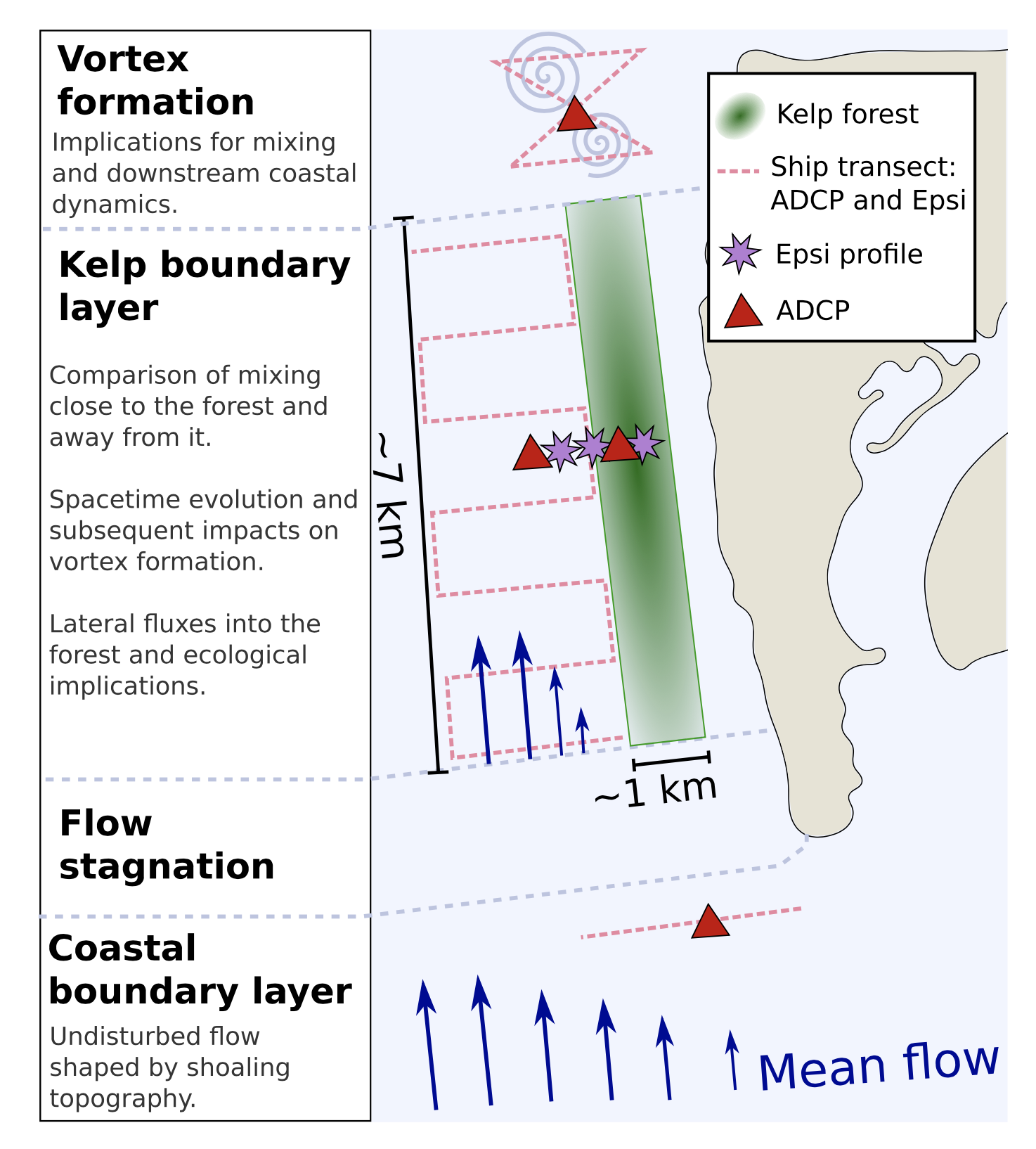A student-designed project to measure the flow around the Point Loma Kelp Forest kicked off this week with the successful deployment of an Acoustic Doppler Current Profiler (ADCP) within the kelp forest. The project was designed by MOD graduate students Bethan, Alex, and Noel, along with fellow graduate student Manuel Gutierrez-Villanueva, for a proposal writing and experiment design class taught by MOD PI Matthew Alford and SIO professor Uwe Send. The project investigates how the presence of vegetation affects coastal flow and the rates of turbulent dissipation outside the kelp forest and within its interior.
Through the support of UC SHIP Funds and the SIO Scientific Diving Program, operations will continue over the coming weeks with ship surveys aboard the R/V Robert Gordon Sproul to measure ocean velocity, and small-boat operations to collect the first-ever microstructure measurements within a kelp forest using the recently-upgraded epsi-fish, our microstructure profiler. The results of this project will help us understand how physical processes, important for the exchange of nutrients and spores, interact with the Point Loma Kelp Forest, the largest giant kelp bed in Southern California and home to many invertebrates, fishes, and marine mammals.
MOD graduate student and scientific diver Alex Andriatis (right) with fellow grad student Anela Akiona (left) after a successful ADCP deployment in the Point Loma Kelp Forest. Thanks to Jennifer MacKinnon and Amy Waterhouse for loaning the ADCP, and to Tyler Hughen and Paul Chua for assisting in preparing it.
We expect four different physical regimes to exist in the area surrounding the Point Loma kelp forest (detailed in left column). To observe and understand their dynamics, we designed ship transects (pink dotted lines), ADCP deployments (red triangles), and microstructure sampling stations (purple stars) around the forest’s boundaries.


